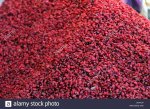Hi Guys,
A new answer from Dr Naviaux on the subject of mitochondria function and homeostasis:
Very interesting! Updated initial post.
B
A new answer from Dr Naviaux on the subject of mitochondria function and homeostasis:
Q8. Since mitochondria have two main jobs in the cell—energy metabolism and cellular defense—is it possible the one function can be overactive at the expense of the other?
Yes. This is a key concept. Our lab classifies all complex chronic disease as being the result of either mitochondrial underfunction or mitochondrial overfunction. Each type has both genetic and environmental causes, but environmental causes outnumber genetic causes in the clinic 10:1. Only expert centers in mitochondrial medicine will typically see the many genetic forms of mitochondrial oxidative phosphorylation and metabolic disorders. Most academic centers will see more of the “ecogenetic” mitochondrial disorders caused principally by environmental factors. These disorders range from autism to asthma, depression and autoimmune diseases, to Parkinson and Alzhemier disease, and many more.
Mitochondria lie at the hub of the wheel of metabolism, coordinating over 500 different chemical reactions as they monitor and regulate the chemical milieu of the cell. It turns out that when mitochondria detect “danger” to the cell, they shift first into a stress mode, then fight mode that takes most of the energy-producing metabolic functions of mitochondria off line. Even normal exercise stresses mitochondria transiently and reminds the cell how to heal. Cells “go glycolytic” under conditions of stress, using oxygen less and sugar more for energy production.
Mitochondria are highly dynamic in the cell. They will fuse with one another and divide, moving about the cell, changing their location according to cellular needs. Sometimes mitochondria will proliferate so a cell has more mitochondria than normal. Other times they will become hypersensitive to minute changes in one or more chemicals in the environment, overreacting to a stimulus that would normally be undetected by cells that have a normal mitochondrial setpoint.
What does all this mean? It means that mitochondria don’t do just one thing. Sometimes, when one function is overactive the other is decreased. This is experienced by athletes in training. Overtraining increases the energy function of mitochondria, but causes a decline in the defense function and they become more susceptible to colds and many other infections. On the other hand, in CFS, many patients report a surprising resistance to the common cold and many other common types of infection. This increase in the antiviral defense function of mitochondria comes at the expense of the energy function.
Energy production and cellular defense are two sides to the same coin—when you are looking at one side, the other side is temporarily hidden. Mitochondrial cannot perform both energy and defense functions at 100% capacity at the same time. Health requires a dynamic balance of both these functions. It is plausible that when a particular patient seems to benefit from long- term use of a drug known to be toxic to mitochondria, that the drug helps rebalance cell defense and cell energy functions by decreasing the over-activity of one function and permitting an increase in an underactive function. My experience is that this is rare in CFS, but exceptions occur and are important to understand if doctors are to get better at treating all patients. Both patients and doctors should carefully evaluate the pros and cons of long-term antimicrobial therapy if the signs of an objective infection have disappeared. Any drug has the potential to be therapeutic or toxic.
Very interesting! Updated initial post.
B


